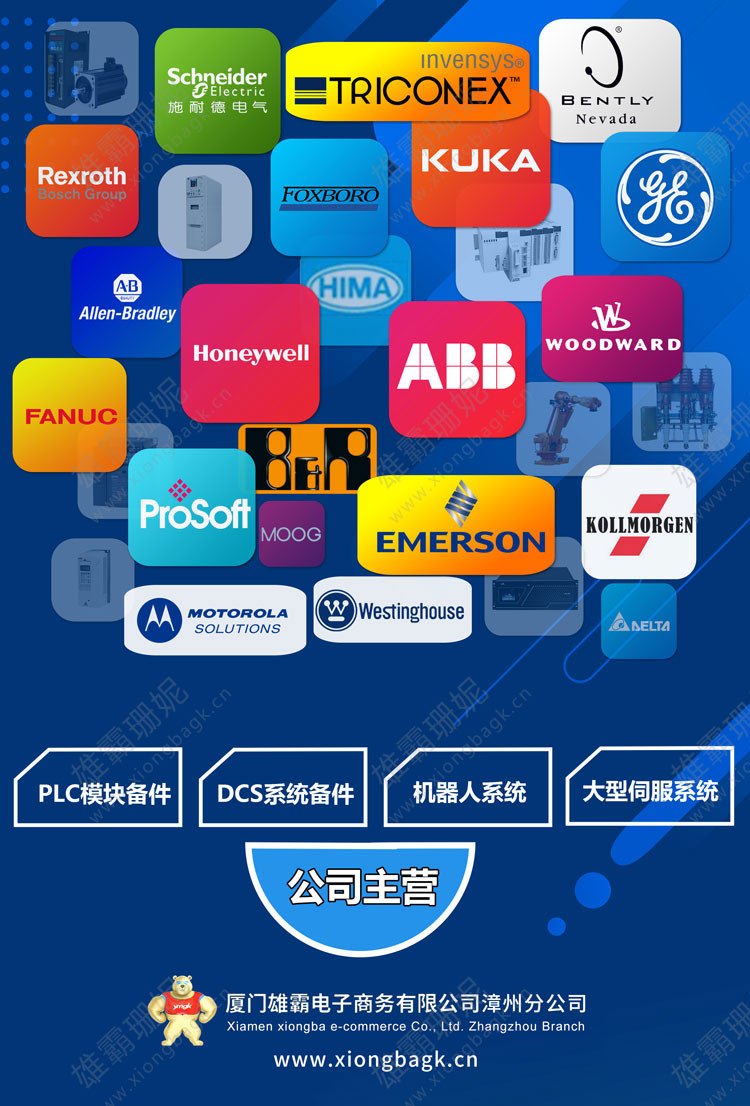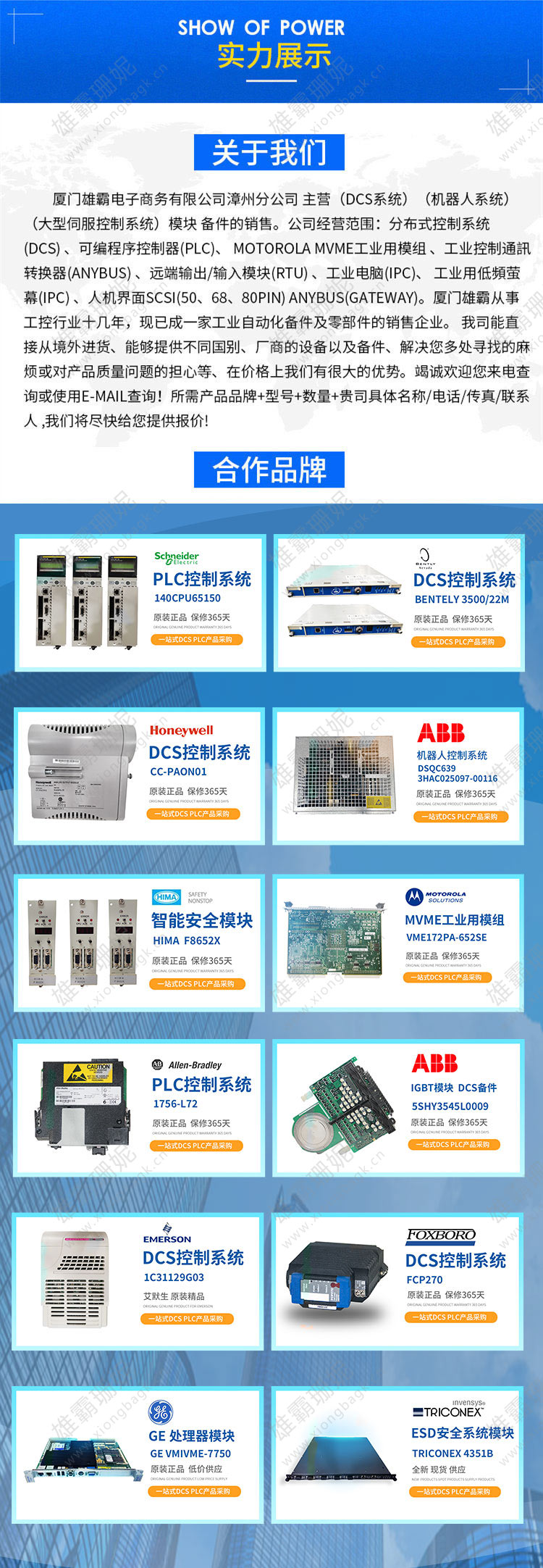产品详情
同步电机,和感应电机(即异步电机)一样是一种常用的交流电机。同步电机是电力系统的心脏,它是一种集旋转与静止、电磁变化与机械运动于一体,实现电能与机械能变换的元件,其动态性能十分复杂,而且其动态性能又对全电力系统的动态性能有极大影响。特点是:稳态运行时,转子的转速和电网频率之间有不变的关系n=ns=60f/p,其中f为电网频率,p为电机的极对数,ns称为同步转速。若电网的频率不变,则稳态时同步电机的转速恒为常数而与负载的大小无关。同步电机分为同步发电机和同步电动机。现代发电厂中的交流机以同步发电机为主
作为电动机运行是同步电机的另一种重要的运行方式。同步电动机的功率因数可以调节,在不要求调速的场合,应用大型同步电动机可以提高运行效率。小型同步电动机在变频调速系统中开始得到较多地应用。

8MSA3L.E0-31
Synchronous motor, and induction motor (that is, asynchronous motor) is a commonly used AC motor. Synchronous motor is the heart of the power system, it is a set of rotation and static, electromagnetic change and mechanical movement in one, to achieve electrical energy and mechanical energy conversion components, its dynamic performance is very complex, and its dynamic performance has a great impact on the dynamic performance of the whole power system. It is characterized by: steady state operation, there is a constant relationship between the rotor speed and the power grid frequency n=ns=60f/p, where f is the power grid frequency, p is the pole number of the motor, ns is called synchronous speed. If the frequency of the power grid is unchanged, the speed of the synchronous motor is constant in the steady state and has nothing to do with the size of the load. Synchronous motor is divided into synchronous generator and synchronous motor. The alternators in modern power plants are mainly synchronous generators
When the synchronous motor works, the three-phase symmetrical current is passed into the stator’s three-phase winding and the DC current is passed into the rotor’s excitation winding. When the three-phase alternating current is passed into the stator three-phase symmetrical winding, a rotating magnetic field will be generated in the air gap. When DC current is passed through the rotor field winding, a stationary magnetic field with constant polarity is generated. If the pole number of the rotor magnetic field is equal to the pole number of the stator magnetic field, the rotor magnetic field rotates synchronously with the stator rotating magnetic field due to the magnetic tension of the stator magnetic field, that is, the rotor rotates at the speed and direction equivalent to the rotating magnetic field, which is the basic working principle of the synchronous motor.
Mode of operation
There are three main modes of operation of synchronous motors, that is, as generators, motors and compensators.
Running as a generator is the most important operation mode of synchronous motor.
Synchronous motor
Operation as a motor is another important mode of operation of synchronous motors. The power factor of synchronous motor can be adjusted, and the application of large synchronous motor can improve the operation efficiency when speed regulation is not required. Small synchronous motor has been widely used in variable frequency speed control system.
The synchronous motor can also be connected to the power grid as a synchronous compensator. At this time, the motor does not have any mechanical load, and the inductive or capacitive reactive power required by the excitation current in the rotor is adjusted to the power grid, so as to improve the power factor of the grid or adjust the voltage of the grid.
The synchronous generator, like other types of rotary motors, consists of two parts: a fixed stator and a rotating rotor. Generally divided into rotary synchronous motor and rotary synchronous motor.
The most commonly used is the rotary synchronous generator, the inner circle of the stator core is evenly distributed with stator slots, and the slots are embedded with three phase symmetrical windings arranged in accordance with the law. The stator of this synchronous motor is also called armature, and the stator core and winding are also called armature core and armature winding.
The rotor core is equipped with a pair of magnetic poles made of a certain shape, and the magnetic pole is surrounded by an exciting winding, and when the direct current is passed, a polarity interphase magnetic field will be formed in the air gap of the motor, which is called the exciting magnetic field (also known as the main magnetic field and the rotor magnetic field).
The prime mover drives the rotor to rotate (input mechanical energy to the motor), and the exciting magnetic field of the polarity phase rotates with the axis and cuts the stator phase winding successively (equivalent to the conductor of the winding cutting the exciting magnetic field in reverse).












